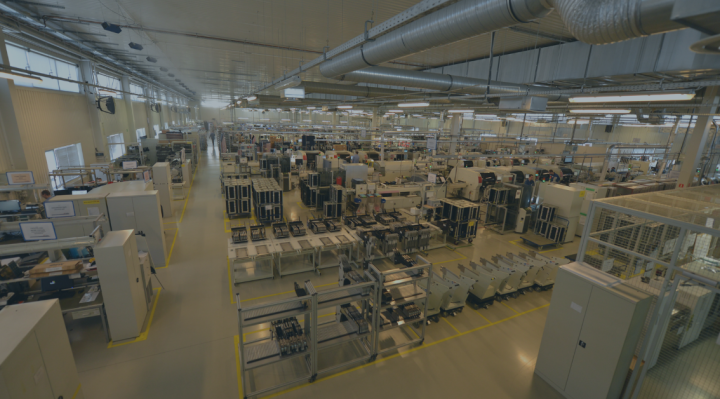Allocations & Uncertainty
The impact of Covid-19 on various business sectors has been exceptionally harsh. Many companies have been left with no clear vision of the future, with no ability to predict what will happen in the short-term. This caused strong risk averse sentiment from the business leaders’ and owners’ perspective, sudden hold of investments and in many cases employee layoffs as a consequence. This has in return transferred into higher unemployment rates not only in developed countries (such as UK, Germany or France), but also been noticeable in growing economies, such as Poland.
Lockdowns have pushed certain businesses to simply freeze their operations (particularly visible in the automotive sector in Q1/Q2 of 2020). The companies could not manufacture or ship components, nor could OEMs deliver their products. Countries, such as Malaysia completely closed their economy for a period of a few months.
There is no doubt that 2020 has been an extraordinary year and has brought a devastating impact on the global economy. The businesses needed to adapt to the new reality during an economic turmoil, in which the GDP growth of essentially all economies have observed a sudden fall and it will certainly take years to return to the pre-pandemic levels.
Entering the 2021 with the pandemic at its peak, we observe the electronics supply chains in fragile state and facing arising challenges. The electronics market is observing a rebound, especially in line with much higher consumer electronics demand and a major change in the automotive sector, where electric and more autonomous cars are playing a much bigger role. Just this shift in the automotive sector, causes a tremendously higher demand for electronic components and room for growth.
Now, this shift in the automotive sector and freeze of the economy during 2020 has caused the entire supply chains blockages. Insufficient freight availability and increased freight fees, extended lead-times and allocation, rising prices, surcharges, raw material costs increases or Brexit.
The jammed electronics component supply chains is the key challenge the electronics manufacturing world will need to face in 2021.
Availability: Electronic Component Allocations and Lead-Times Struggle
For those who have not experienced allocation before, this describes the point where demand for a product outstrips the available manufacturing capacity.
Allocations result in extended lead times and/or situations, where manufacturers allocate product to try and keep everyone manufacturing however not necessarily at the desired volume. In consequence, this translates into issues with component availability, extended lead-times and the necessity to search for components on the open market.
With the disruptions in the supply chains, the lead-times have extended drastically and will continue to do so. At the moment, the market is seeing inventory tightening for the following manufacturers: ST Microelectronics, Microchip, Vishay, AVX, Kioxia, AnalogDevices, ISSI, TI, Vishay, Infineon, NXP, On Semiconductor. Micron & Samsung DDR3’s are constrained with limited room for any potential upside business.
To minimise the risks, we recommend to extend the order outlook to at least a minimum of 6 months and beyond. Furthermore, the suggestion is to share maximum visibility with your Electronics Manufacturing Services (EMS) partner and in particular to secure these material items that are deemed most problematic.
Unfortunately, the initial COVID “freeze” has caused reduced capacity and as output in 2020 clashed with increased demand in the global 5G, automotive, smartphone and IoT sectors, another “shock” has been delivered to already fragile electronic component market.
Increased Pricing
The consequence of the supply chain turbulences and limited availability is not surprising. Prices are not expected to remain at the current level. They are suddenly being reviewed by the electronic component manufacturers and the trend is clear. Pricing will go up. At the moment they will also remain uncertain and most probably such uncertainty will continue until the end of Q1 of 2021. A few examples from the global manufacturers include:
- Microchip issued a price increase notice and changes in pricing are already visible since the second half of January.
- Wago will issue a new price list by March 2021.
- NXP has generally risen the pricing on its list
- Not only have the lead-times of Vishay resistors surged, but so has the pricing. Same refers to ST, where the concern is even higher as to t he lead-times.
The general price increases that are observed, depending on the manufacturer and commodity, range from single to double digits percentage increases.
Freight Costs and Delays
With the commercial aviation on hold, the extra fees added to transportation costs by Q2 2020 remain in place and the trend continues to be upward. Due to higher demand in Q1 2021 and the Chinese New Year, the turbulences rise to the extent that the freight is being delayed and extended in time. In fact, the turbulences in logistics resemble the condition of the component supply chain.
Printed Circuit Boards (PCBs) Sector
With the Chinese New Year commencing, the PCB supply from China will be put on hold for a few weeks. The rumours regarding the potential extension of the Chinese New Year by the Chinese government (due to safe travelling) may additionally strengthen the negative condition.
The bullish market is driving the prices of natural resources to climb. It also refers to Copper. This surge is impacting the PCB pricing and this impact has already been observed. The uncertainty remains on-going, just as the PCB price rises continue steadily.
Electronics Component Market in 2021 - Summary
After an abnormal 2020, the pandemic and its effects does not seem to slow-down. We all hope for the vaccine to be wide-spread globally with the vision of a fast return to “normality”.
However, it is no secret that the electronic component supply chain functions on a macro scale within a fragile surrounding. Year 2021 will be extremely challenging for the OEMs and for their Electronics Manufacturing Services (EMS) providers, but a flexible approach and a quick decision-making process shall minimise the impact of the electronic component turmoil and write a positive scenario for the future.







